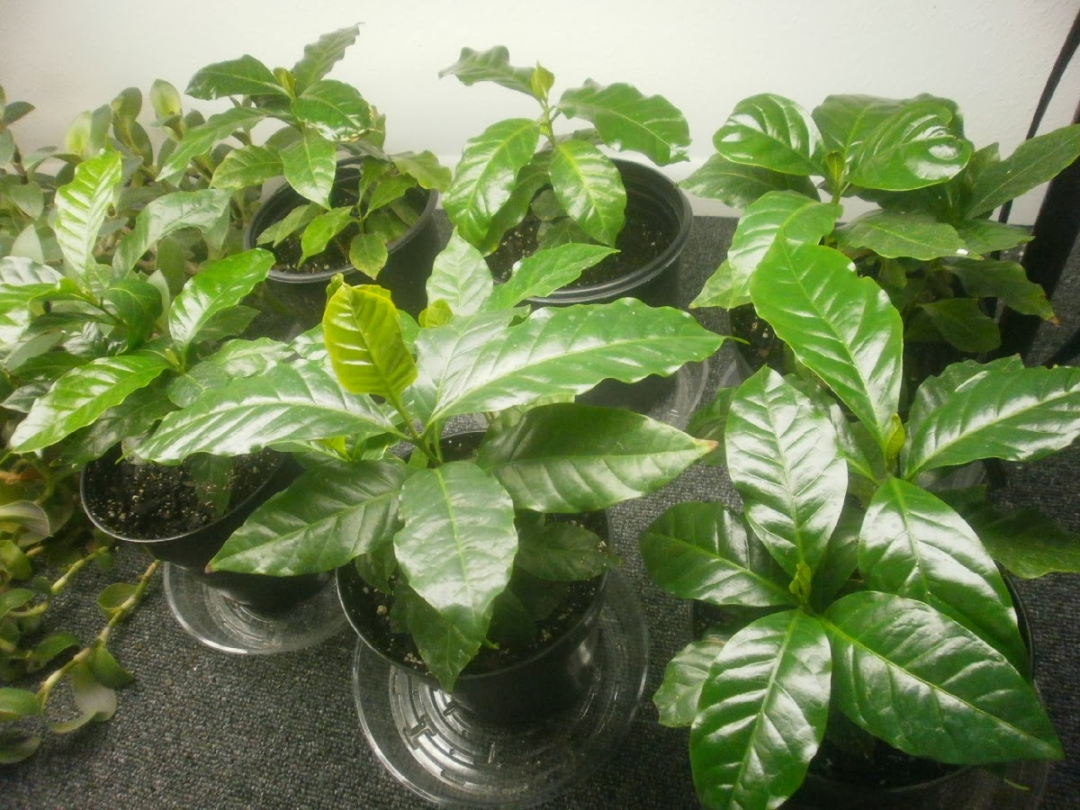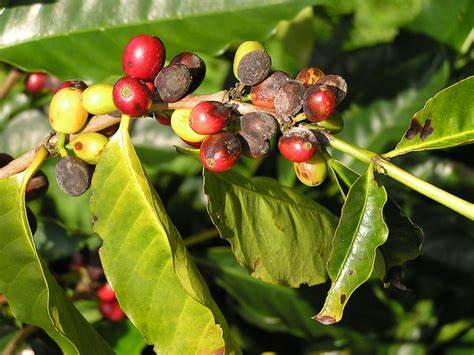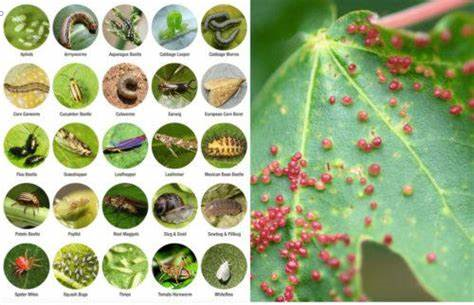Grow Your Own Coffee at Home to Discover the Remarkable Flavours!
If you’re a coffee enthusiast and a gardening enthusiast, why not combine your passions by growing your own coffee at home? Cultivating coffee plants indoors can be a rewarding and educational experience, not to mention the satisfaction of eventually brewing a cup of coffee from beans you’ve nurtured yourself. In this blog post, we’ll explore different coffee varieties suitable for home cultivation, tips for growing them indoors, and the timeline to expect your first homegrown coffee beans.

Varieties of Coffee for Home Cultivation:
There are two main species of coffee plants that are commercially cultivated for their beans when you grow your own coffee at home are: Coffea arabica (Arabica) and Coffea canephora (Robusta). Arabica coffee is known for its nuanced flavours and is generally considered higher quality, while Robusta is often used for its higher caffeine content and disease resistance. Both species can be grown indoors, but Arabica is more popular due to its flavour profile.
Here are a few coffee varieties that are suitable for grow your own coffee at home:
- Arabica Varieties:
- Typica: A classic variety with a balanced flavour profile and mild acidity.
- Bourbon: Known for its sweetness and complex flavours.
- Caturra: A mutation of Bourbon, it’s a compact plant suitable for indoor cultivation.
- Geisha (Gesha): Famous for its exceptional flavour, often with floral and fruity notes.
- SL28 and SL34: Varieties developed in Kenya, known for their vibrant acidity.
- Robusta Varieties:
- Robusta: Grown for its strong, full-bodied flavour and high caffeine content.
- Nganda: A Ugandan variety with good disease resistance.
- S274 (CXR): Known for producing beans of higher quality compared to traditional Robusta.
Do I need any Special Tools to Grow Coffee at Home?
Grow your own coffee at home really doesn’t require a multitude of specialized tools but having a few essential items can certainly make the process more efficient and enjoyable. Here’s a list of some useful tools and equipment for growing coffee plants indoors:
- Pots and Containers: Choose spacious containers with good drainage. It’s a good idea to start with a small pot and gradually repot your coffee plant as it grows to accommodate its root system.
- Potting Mix: A well-draining soil mix that provides good aeration and moisture retention is essential. You can use a mix of potting soil, peat moss, and perlite or other similar components.
- Watering Can or Spray Bottle: Coffee plants prefer consistent moisture, so having a watering can or spray bottle for misting can help maintain the right humidity levels.
- Grow Lights: If you don’t have access to sufficient natural sunlight, consider investing in full-spectrum grow lights. These lights simulate sunlight and provide the necessary light energy for healthy plant growth.
- Pruning Shears: Pruning helps shape your coffee plant and encourage branching. A pair of pruning shears will come in handy for removing dead or unwanted growth.
- Humidity Tray or Humidifier: Coffee plants thrive in higher humidity environments. A humidity tray filled with water, or a small humidifier can help maintain the ideal humidity levels for your plants.
- Fertilizer: Choose a balanced liquid fertilizer formulated for indoor plants. Dilute it to half strength and feed your coffee plant during the growing season (spring and summer).
- Thermometer and Hygrometer: Monitoring the temperature and humidity levels around your coffee plant can help you ensure that it’s getting the optimal conditions for growth.
- pH Tester: While not strictly necessary, a pH tester can help you monitor the pH level of your soil. Coffee plants prefer slightly acidic soil with a pH around 6.
- Support Stakes: As your coffee plant grows, it may need support to prevent it from becoming top-heavy or leaning. Bamboo stakes can provide the necessary support.
- Trellis or Climbing Support (if growing a climbing variety): Some coffee varieties, like Geisha, have a tendency to climb. If you’re growing such a variety, a trellis or climbing support can be useful.
- Mulch (optional): Adding a layer of mulch to the surface of the soil can help retain moisture and regulate soil temperature.
Remember that while these tools can enhance your coffee-growing experience, the most critical factors for success are providing the right conditions—adequate light, proper humidity, appropriate watering, and the right soil mix. As you gain experience and get to know your coffee plants better, you’ll develop a sense of what works best for your specific setup.
Can You Grow Your Own Coffee Indoors?
Indoor Cultivation Tips: Growing coffee plants indoors requires a bit of effort and attention to detail. Here’s how you can get started:
- Selecting the Right Container: Choose a spacious container with good drainage. Coffee plants have an extensive root system, so a larger pot is better.
- Soil: Use a well-draining soil mix. A blend of potting soil, peat moss, and perlite works well.
- Light: Coffee plants thrive in bright, indirect light. Place them near a window with filtered sunlight or provide artificial grow lights.
- Temperature and Humidity: Coffee plants prefer moderate temperatures between 60-70°F (15-24°C) and higher humidity levels. Mist the leaves regularly.
- Watering: Keep the soil consistently moist but not waterlogged. Allow the top inch of soil to dry before watering again.
- Fertilization: Use a balanced liquid fertilizer diluted to half strength. Feed the plant every 6-8 weeks during the growing season.

Time to Harvest: Growing coffee plants from seed to harvest is a patient process. It takes about 3-4 years for a coffee plant to mature and start producing cherries. Here’s a general timeline:
- Year 1: Plant germinates and develops its first few leaves.
- Year 2: The plant grows taller with more leaves. Prune lightly to encourage branching.
- Year 3: The plant continues to grow and may produce its first flowers.
- Year 4: Flowers are pollinated, and cherries begin to develop. Harvest can begin once cherries are ripe.
It’s worth noting that indoor plants may take slightly longer to mature due to reduced light intensity and space constraints.
You can purchase coffee plants from a variety of sources, both online and offline. Here are some options to consider:
- Nurseries and Garden Centers: Local nurseries and garden centres might carry coffee plants, especially those that cater to indoor gardening and exotic plants.
- Online Plant Retailers: Many online plant retailers offer a wide range of plants, including coffee plants. Be sure to read reviews and check the reputation of the seller before making a purchase.
- Specialty Coffee Shops: Some specialty coffee shops, especially those with a focus on sustainability, might sell coffee plants or be able to guide you to local sources.
- Plant Expos and Farmers’ Markets: Look for plant expos, farmers’ markets, or botanical garden events in your area. These can be great places to find unique plants, including coffee plants.
- Online Marketplaces: Online marketplaces like Amazon, eBay, and Etsy often have coffee plants available for purchase. Again, make sure to read reviews and choose a reputable seller.
Is there an Ideal Time to Plant my Coffee Trees?
As for the ideal time to start growing coffee plants at home, it’s generally best to begin in the spring or early summer. This allows your coffee plant to take advantage of the warmer and more favourable growing conditions. Starting in the colder months might slow down growth, and the reduced daylight hours could affect your plant’s development.
Here’s a rough timeline to consider:
- Spring (March to May): This is an optimal time to start. As temperatures rise and daylight hours increase, your coffee plant will have a good growing season ahead.
- Early Summer (June to July): If you missed the spring window, early summer is still suitable for planting coffee. Just make sure to provide your plant with the necessary light and warmth.
Starting during these times gives your coffee plant the opportunity to establish itself and grow during the more active growing season. Remember that coffee plants are slow growers, so be patient and consistent in your care as you watch them develop over the years so you too can grow your own coffee at home successfully.

What Type of Soil should I Use to Grow Your Own Coffee at Home?
Choosing the right soil is crucial for successfully growing coffee plants at home. Coffee plants have specific soil requirements to ensure healthy growth and optimal coffee bean production. Here’s a guide and some tips on selecting and preparing the right soil for your coffee plants:
1. Well-Draining Soil: Coffee plants do not tolerate waterlogged soil, as it can lead to root rot. Choose a well-draining soil mixture that allows excess water to drain away from the roots. A soil mix that retains moisture without becoming soggy is ideal.
2. Slightly Acidic pH: Coffee plants prefer slightly acidic soil with a pH range of 6 to 6.5. Test the pH of your soil using a soil testing kit to ensure it falls within this range. If your soil is too alkaline, you can lower the pH by adding materials like peat moss or sulphur.
3. Organic Matter: Incorporating organic matter into the soil improves its structure, nutrient content, and water-holding capacity. Compost or well-rotted organic material can enhance the soil’s fertility and create a favourable environment for root development.
4. Soil Components: You can create a suitable soil mix for coffee plants by combining the following components:
- Peat Moss: Provides acidity and moisture retention.
- Perlite: Improves drainage and aeration in the soil.
- Compost: Adds nutrients and organic matter to the soil.
- Coarse Sand: Enhances drainage and prevents compaction.
5. Soil Preparation: Follow these steps to prepare the soil for planting coffee:
a. Choose a Pot: If you’re growing coffee indoors, select a pot with drainage holes. For outdoor planting, ensure the planting site has good drainage.
b. Mix Soil Components: In a container, mix peat moss, perlite, compost, and coarse sand in equal parts. This mixture provides the right balance of acidity, drainage, and nutrients.
c. Fill the Pot: Fill the pot with the soil mixture, leaving enough space at the top for watering.
d. Planting: Gently transplant your coffee seedling or plant into the prepared pot. Ensure that the soil level is similar to the level it was at in the original container.
6. Mulching: Applying a layer of organic mulch, such as wood chips or straw, around the base of the plant helps retain soil moisture, suppress weed growth, and maintain a consistent soil temperature.
7. Fertilization: While the initial soil mix contains nutrients, coffee plants benefit from periodic fertilization. Use a balanced, water-soluble fertilizer diluted to half the recommended strength. Apply it during the growing season (spring and summer) every 6 to 8 weeks.
8. Watering: Water your coffee plant when the top inch of the soil feels dry. Avoid overwatering, as it can lead to root rot. Proper drainage and a well-balanced soil mix will help regulate moisture levels.
Remember that successful coffee plant cultivation requires attention to detail, and adjustments based on your specific growing conditions. Regularly monitor the plant’s health, adjust watering and fertilization as needed, and provide appropriate care to ensure the best results for your home-grown coffee plants.
How Often Should I Water my Coffee Plant & Do Coffee Plants need Fertilizers?
Watering Your Coffee Plant:
Proper watering is essential for the health of your coffee plant. While the frequency of watering can vary based on factors like climate, humidity, and pot size, here are some general guidelines:
- Check Soil Moisture: Before watering, insert your finger about an inch into the soil. If it feels dry at this depth, it’s time to water.
- Consistent Moisture: Coffee plants prefer consistently moist soil but not waterlogged conditions. Ensure that the soil remains damp, but not soggy.
- Avoid Overwatering: Overwatering can lead to root rot. If the soil feels wet or if water accumulates in the saucer beneath the pot, hold off on watering until the soil has a chance to dry slightly.
- Seasonal Adjustments: During the active growing season (spring and summer), you’ll likely need to water more frequently. In the dormant season (fall and winter), when growth slows down, you can reduce watering frequency.
- Humidity Considerations: Coffee plants thrive in humid environments. If you’re growing your plant indoors, consider using a humidity tray, humidifier, or misting the leaves to maintain adequate humidity levels.
Fertilizing Your Coffee Plant:
Yes, coffee plants do benefit from regular fertilization, particularly during their active growth periods. Here’s what you need to know about fertilizing your coffee plant:
- Balanced Fertilizer: Choose a balanced, water-soluble fertilizer with a balanced N-P-K ratio (nitrogen, phosphorus, and potassium). For example, a fertilizer with an N-P-K ratio of 10-10-10 or 20-20-20 is suitable.
- Dilute the Fertilizer: Dilute the fertilizer to half the strength recommended on the package. Coffee plants are sensitive to overfertilization, which can lead to burned or stressed roots.
- Frequency: During the active growing season (spring and summer), fertilize your coffee plant every 6 to 8 weeks. Reduce or stop fertilization during the dormant season.
- Application Method: Water the plant with the diluted fertilizer solution, ensuring that the soil is evenly moistened.
- Organic Options: If you prefer organic options, you can use compost or well-rotted manure to provide nutrients to your coffee plant. Mix a small amount into the soil during the growing season.
- Avoid Excess: Too much fertilizer can lead to rapid, weak growth and susceptibility to pests. If you notice your plant’s leaves turning yellow, it might be a sign of overfertilization.
Remember that each coffee plant is unique, and factors like the type of soil mix, pot size, and environmental conditions will influence watering and fertilization needs. Regularly monitor your plant’s health, adjust your care routine as needed, and pay attention to its growth and appearance to ensure it’s receiving the right amount of water and nutrients.
Are There Any Common Pests or Diseases to Watch Out For?
Grow your own coffee at home can be susceptible to certain pests and diseases. Monitoring your plants regularly and taking preventative measures can help keep them healthy. Here are some common pests and diseases to watch out for when growing coffee plants:

Common Pests:
- Aphids: These tiny insects feed on plant sap and can cause distorted growth and yellowing of leaves. Use insecticidal soap or a strong spray of water to remove them.
- Mealybugs: Mealybugs are small, white insects that cluster on leaves and stems, sucking sap from the plant. Wipe them off with a damp cloth or use neem oil or insecticidal soap.
- Spider Mites: These microscopic pests create fine webbing on leaves and cause stippling or discoloration. Increase humidity and use insecticidal soap or neem oil to control them.
- Scale Insects: Scale insects appear as small bumps on stems and leaves, and they also feed on plant juices. Remove them manually or use horticultural oil to suffocate them.
- Whiteflies: These small, white insects can cause yellowing and weakening of the plant. They fly up when disturbed. Use yellow sticky traps and insecticidal soap to control their population.

Common Diseases:
- Coffee Leaf Rust: This fungal disease causes orange or yellow powdery spots on the leaves, leading to defoliation and reduced vigor. Use fungicides and remove infected leaves to control its spread.
- Coffee Berry Disease: This fungal infection affects the coffee berries, causing them to rot and drop prematurely. Remove infected berries and improve air circulation to prevent the disease’s spread.
- Root Rot: Overwatering or poorly drained soil can lead to root rot, causing the plant to wilt and decline. To prevent root rot, ensure proper drainage and avoid overwatering.
- Bacterial Blight: This disease causes brown lesions on leaves and stems, eventually leading to leaf drop and weakened plants. Prune affected parts and avoid overhead watering.
Preventative Measures:
- Inspect Regularly: Regularly inspect your coffee plants for signs of pests or diseases. Catching issues early can prevent them from spreading.
- Isolation: If you acquire a new plant, isolate it for a period before introducing it to your other plants. This helps prevent potential pest or disease transmission.
- Cleanliness: Keep your growing area clean by removing fallen leaves and debris. This reduces hiding places for pests and pathogens.
- Good Drainage: Ensure your coffee plant’s soil has good drainage to prevent root rot.
- Proper Spacing: If growing multiple plants, provide adequate spacing to promote good air circulation and reduce disease spread.
- Quarantine: Quarantine new plants before introducing them to your collection to prevent introducing pests or diseases.
- Natural Predators: Encourage beneficial insects like ladybugs and lacewings, which help control pest populations.
- Pruning: Regularly prune dead or diseased plant parts to prevent the spread of diseases.
Remember that prevention is key. By implementing good cultural practices, monitoring your plants, and addressing issues promptly, you can maintain healthy coffee plants and reduce the risk of pests and diseases impacting your crop.
Author
Brendon McAliece is a multi-lingual expat who brings over three decades of flight simulator/PC building experience as well as over two decades of real-world jet fighter experience as a weapons/egress technician. He holds a sport pilot certificate giving him real-world flying experience. Hi travels have taken him from Europe to the Middle East, Asia and his home of Australia. He has a passion for travel, languages, Flight simulation as well as Guitaring and Coffee. You can read more in his blogs below.

Learn more @
DreamingGuitar.com – DreamingCoffee.com – LetsFlyVFR.com
Home – Blog – Shop – About
As an Amazon affiliate I may earn on qualifying sales.





